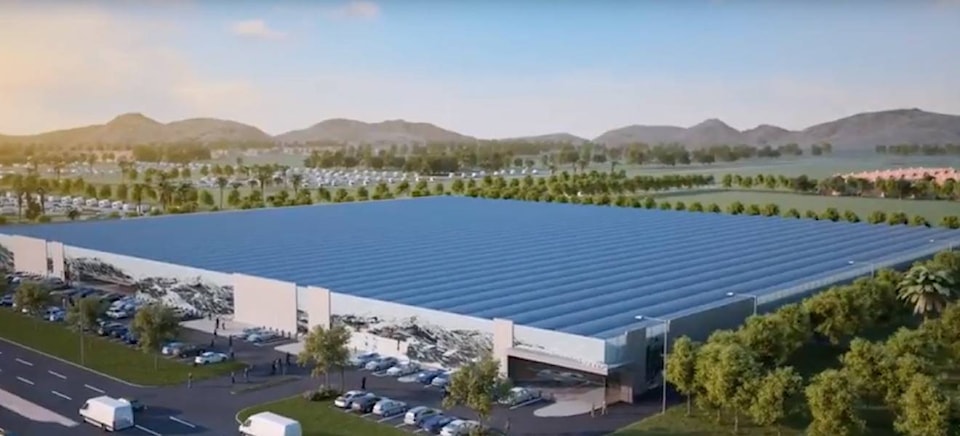A South Okanagan winery owner is undergoing a final review with Health Canada, with hopes of setting up what would be the largest medical cannabis facility in B.C.
Tony Holler, owner of Poplar Grove Winery, said his company, Sunniva, is currently building a 500,000 square foot facility near Palm Springs, California. But if all goes well with Health Canada, his proposed Sunniva facility near Oliver would be a whopping 700,000 square feet and produce about 100,000 kilograms of medical-grade cannabis per year.
That facility, he hopes, will be located on Osoyoos Indian Band land, in the industrial park near the Okanagan Correctional Centre.
Related: First Nations look to grow marijuana industry for economic highs
“We’ve got lots of work to do. We have to finish our lease with the band, and we’re in what’s called final review with Health Canada, and before we get started we need a letter from Health Canada, and obviously we’re looking at a number of proposals for financing,” Holler said.
“I’m hoping construction can start in the second quarter in this year. We’re already talking to our suppliers.”
Holler said he has had “no experience with cannabis personally” — not that he objects to it, but he said he gets an asthma-like reaction to smoking substances.
Related: Legal pot may breathe life into small Canadian towns hit by resource losses
“So I really had sort of no knowledge, and about four years ago my cofounder, Leith Pederson, was saying to me, ‘hey Tony, you’re a physician, and you’ve worked in the pharmaceutical industry, you built a huge vaccine company, I can’t believe you aren’t looking at this industry,’” Holler said.
“So I spent a few months reading all the academic literature, talking to a lot of people, visiting facilities that were growing cannabis, and basically educated myself, and what I sort of determine at the end of that period was wow, there’s a lot of stuff I didn’t know. And surprisingly, I concluded that cannabis undoubtedly had a role in medicine.”
Currently, Holler noted, the potential medical value of cannabis is under-researched in North America, and there have been claims to both extremes — that cannabis can cure or treat a vast array of ailments and that it has no medical value.
Related: Green gold rush in the Okanagan
“The most exciting part, though, is with legalization all of a sudden you’re going to get a ton of research done and we’ll soon have some real parameters for treating a variety of disorders,” he said.
“Will it treat everything like some people are sort of intimating? No, that’s just total nonsense. This isn’t something that will be useful for every medical condition, but I think there’ll be a significant amount of data out that points to its value in the treatment of a number of conditions.”
Holler said cannabis can be a solid substitute for some drugs, as it is typically relatively harmless to other drugs, and has fewer side effects, but he added it could also just be a supplement to other drugs.
At 700,000 square feet, Holler said the Oliver facility would be the largest in B.C., adding he wasn’t aware of any other facilities that came close, pointing to a couple of facilities in the 20,000 square foot range, up to about 100,000 square feet.
Related: Vancouver Island marijuana producer bought by Aphira in $230M deal
Holler said going as large as he is follows in his past steps with a flu vaccine manufacturing plant.
“It used all modern technology, very much like our greenhouses, they’re really technology driven, and we were able to produce flu vaccines at much lower costs than traditional facilities at greater quality and at big scale,” he said.
“What ended up happening is that one of the largest pharmaceutical companies in the world saw our operation and what we could do and bought us for $1.7 billion.”
Holler said the larger the facility, the easier he can meet three major metrics: low cost, high production volume and high quality.
Related: Weed need may not be met
“You only have to look back at the car industry when Henry Ford came into it,” he said, noting that before Ford there were “problems with supplying the market, the cost was outrageous and the quality was poor.”
“My theory on this industry is that it will be just like every other industry, eventually, where low cost, high quality are going to be critical to being successful.”
@dustinrgodfrey
dustin.godfrey@pentictonwesternnews.com
Like us on Facebook and follow us on Twitter.
